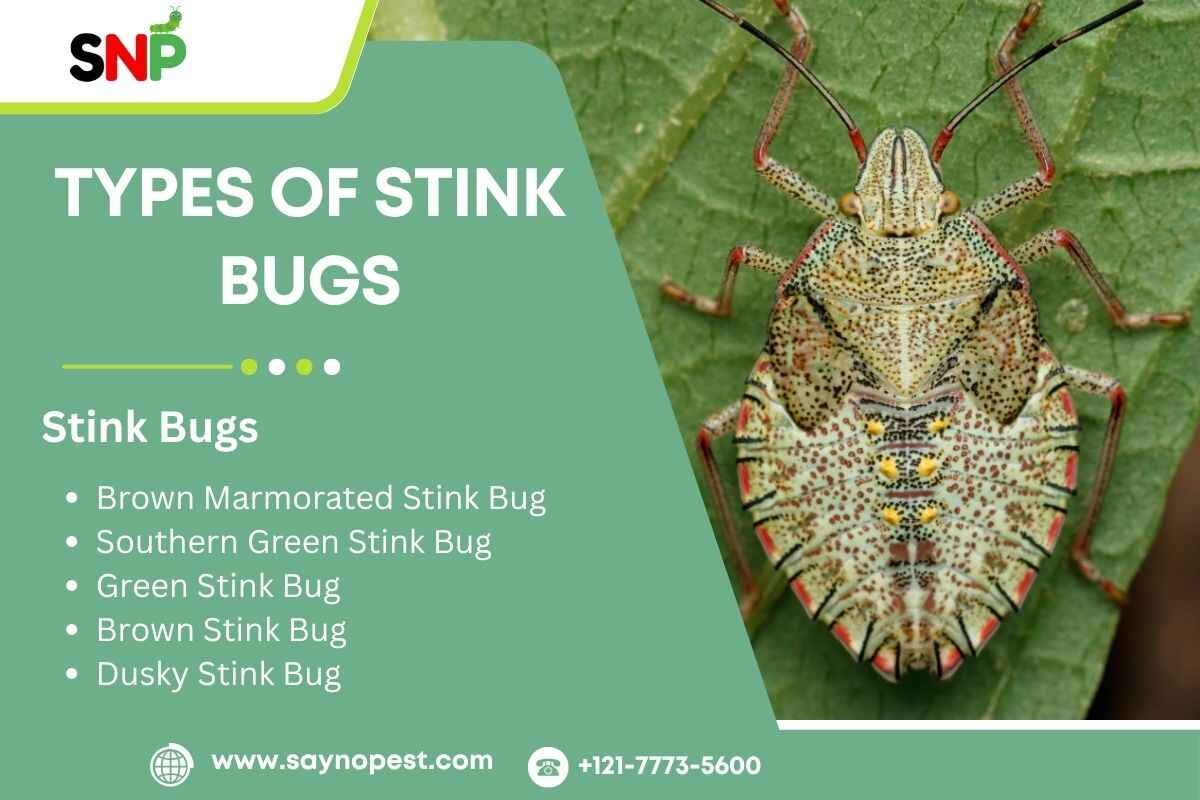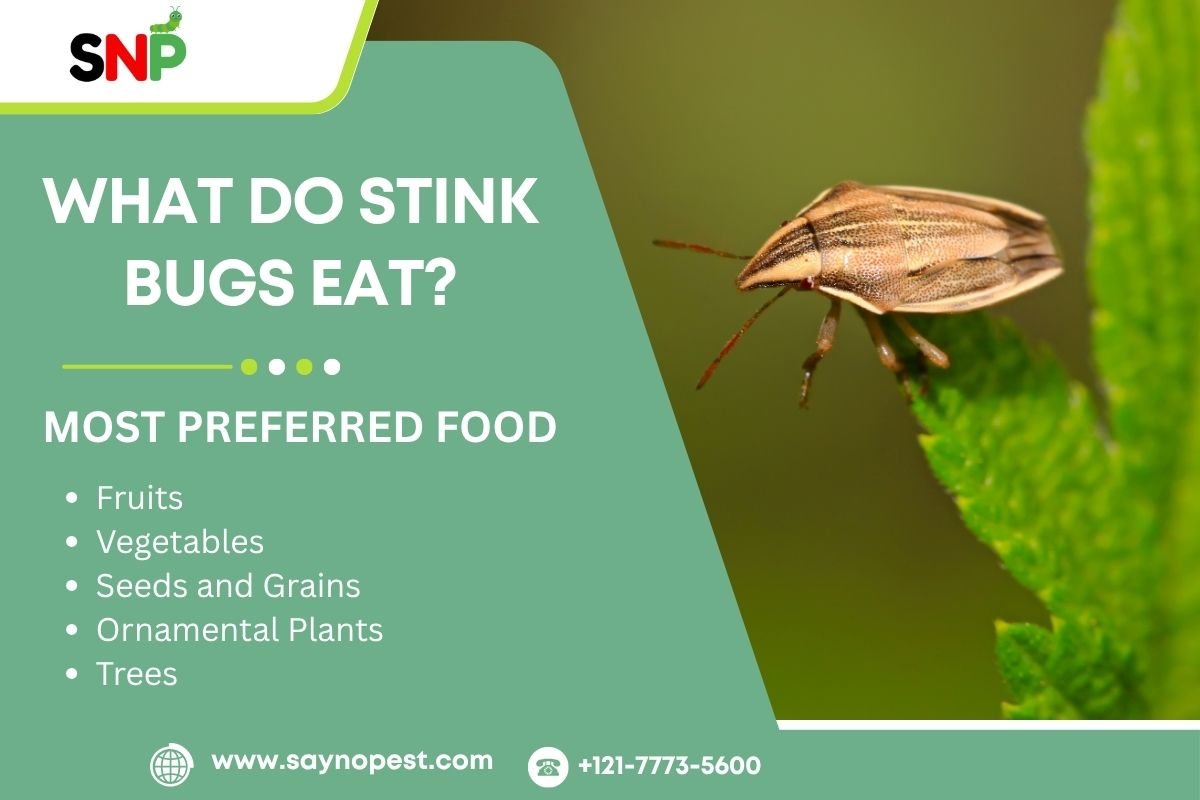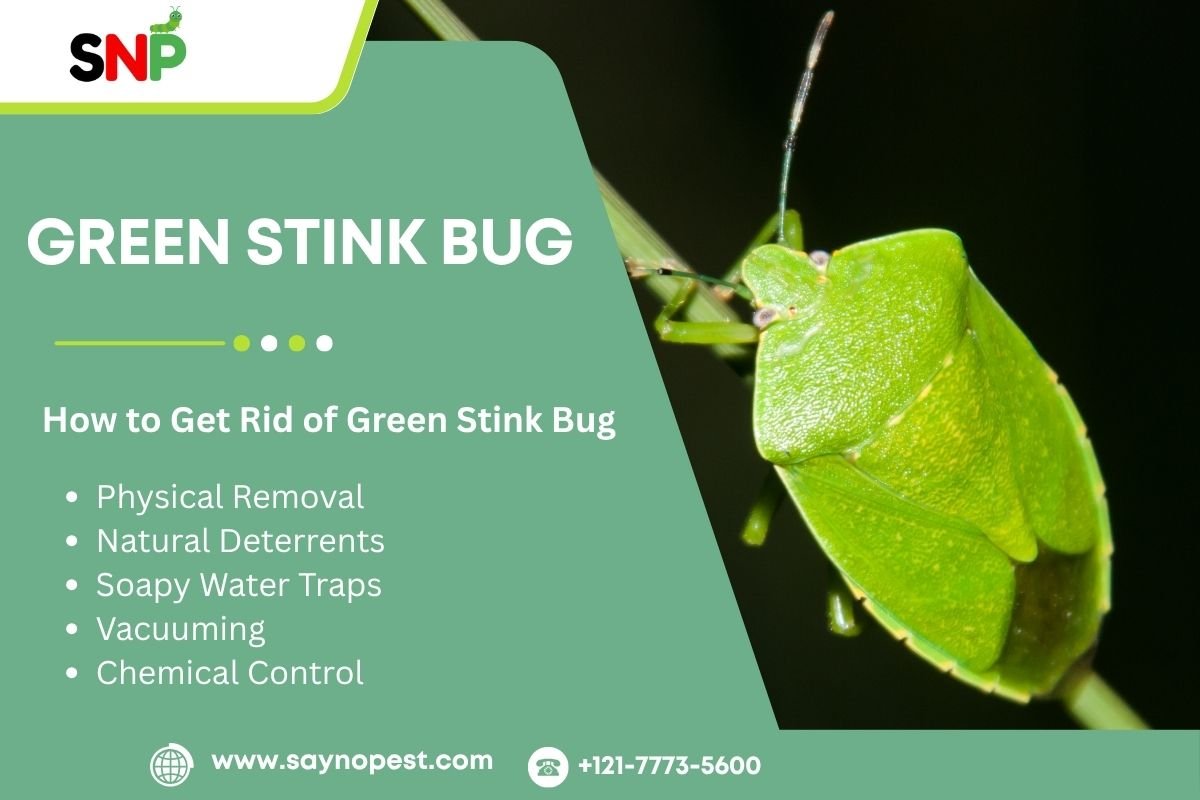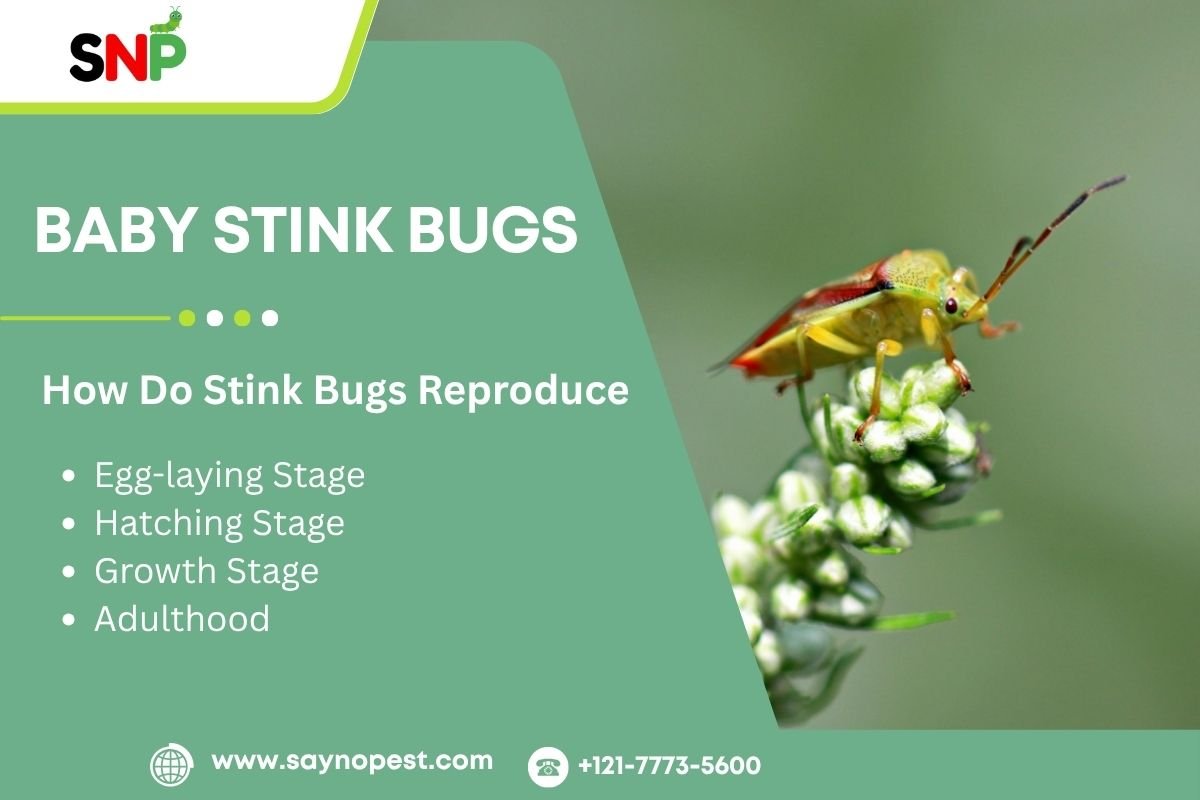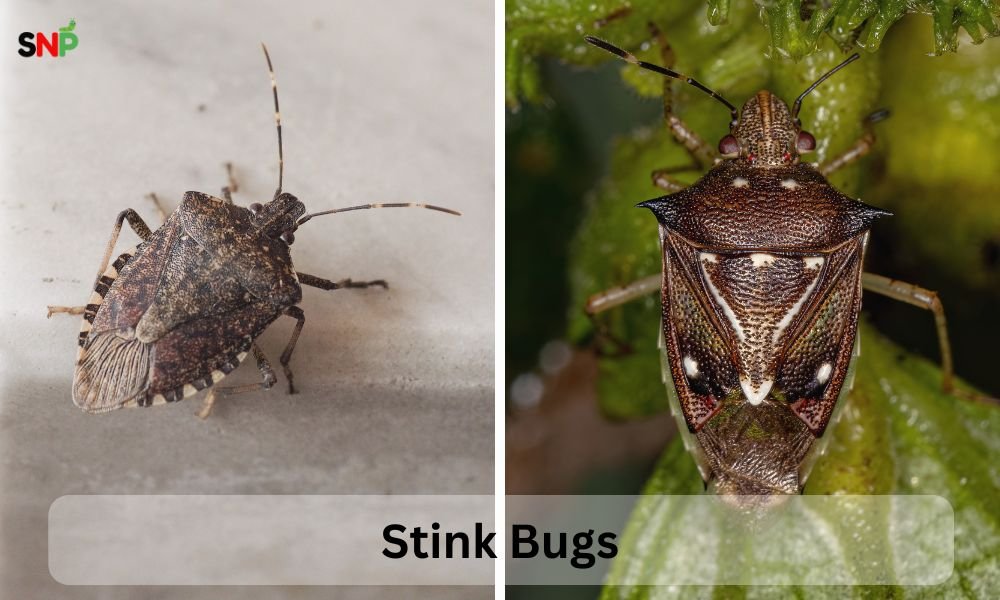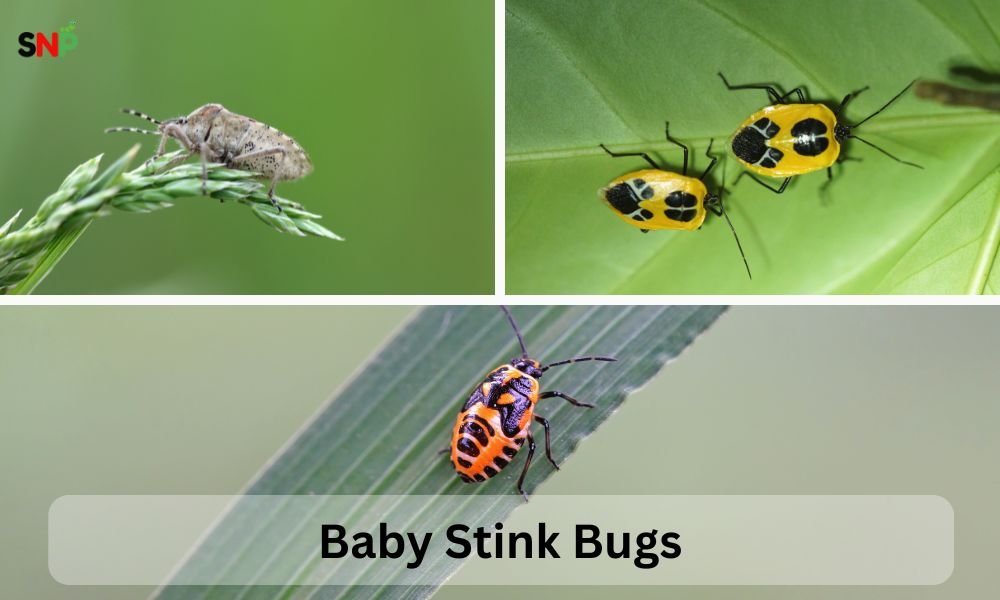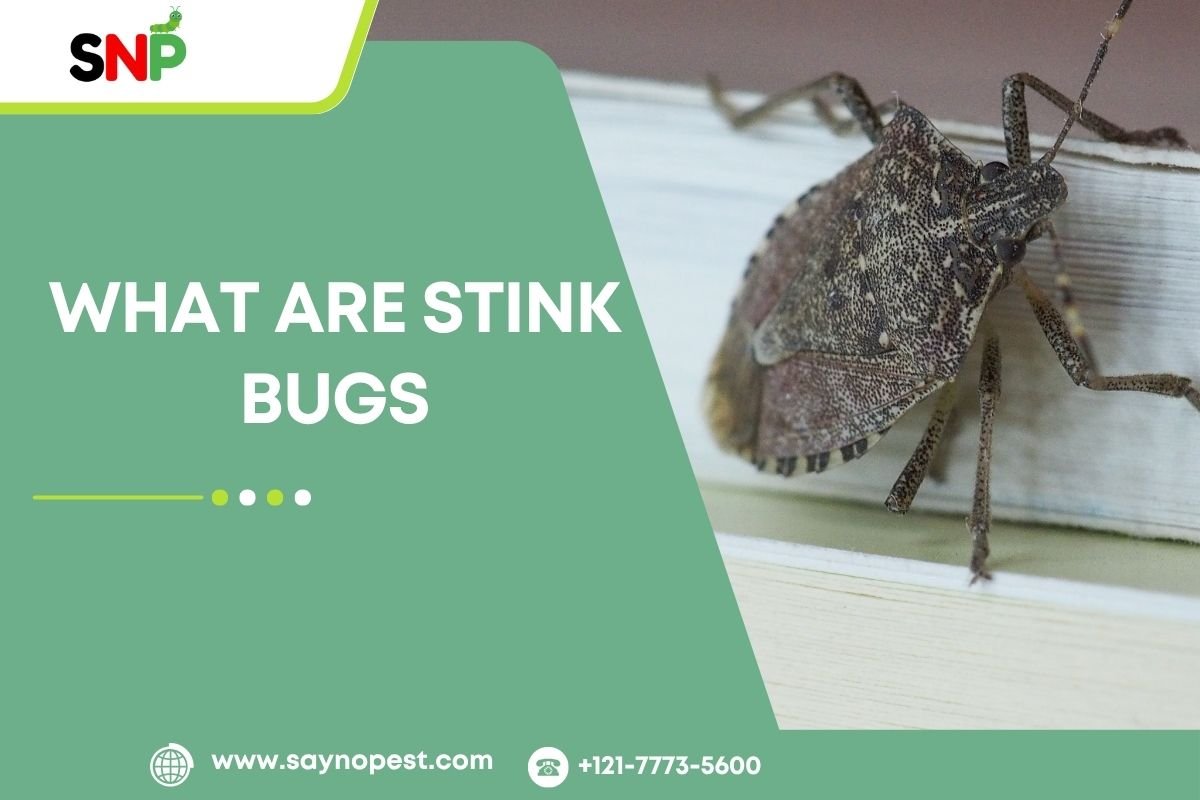If you see small, shield-shape bugs in your home or garden, it advised that you are most probably facing stink bug. Do you know that, besides being odorous, they present a real danger to your plants, your crops, and your sanity? In this blog, we will explain the different types of stink bugs, cover some common questions, such as what do stink bugs eat and do stink bugs fly, show you the signs of an infestation, and share some practical advice to protect your homes and property.
What Do Stink Bugs Eat?
A question that people usually have frequently is: What do stink bugs eat? Stink bugs have evolved to feed on plant species that are destructive to gardens, fruits, and crops. Their diet is balance: they include apples, peaches, berries and grapes, tomatoes, beans, and peppers, among others. They also consume foods such as corn, soya beans, rice, flowers such as sunflowers, and magnolias. Some of the types of stink bugs eat other insects, which is consider a good way to control pests in gardens, however, the majority are the main contributing factors to the destruction of agricultural lands due to their vast appetites. Therefore, if you are inquisitive about what do stink bugs eat, the answer is quite simple: almost anything green and growing.
Types of Stink Bugs
As many as 200 types of stink bugs have been identified in North America, and recognizing the most familiar one and the way it looks will help prevent infestations of these pests. Here is the list of the most common stink bugs seen in the United States, as well as their characteristics.
Invasive Pest – Brown Marmorated Stink Bug
- Appearance: A shield-shaped, bears 12–17 length with a mottled brown-gray color. Check for white bands on the last two segments of the antennae, as well as the bands on the edge of the abdomen portion.
- Where Found: A plant that originated in Asia but now is naturalized throughout much of the United States though most numerous in the eastern part of the country. It is a disease that is known to invaded many homes especially when the weather starts getting colder towards the end of the year.

Southern Green Stink Bug (Nezara viridula)
- Appearance: It has a bright green body color, red or black colored compound eyes, and small black specks present along the sides of the abdomen. Males are 12.3-12.7 mm; females are slightly larger, 12.7-13.0 mm in body length.
- Where Found: Another one is located in the South, Texas, and Midwest regions of the United States. they usually locate in warm climates, and the common crops it attacks are beans and tomatoes.
Green Stink Bug (Chinavia hilaris)
- Appearance: It has a bright green color, a rounded rectangular shape with more finer yellow line just around the body. Smaller in size than the southern green stink bug, but does not have red bands on the antennae.
- Where Found: This is evident throughout the U.S, especially in gardens and fields used for farming.
Brown Stink Bug
- Appearance: Robust, chestnut-brown as a rule, subfusiform and except for the broader and slightly rounded shoulders that exclude the dark band, 12–14 mm in length.
- Where Found: Widespread in the fields and gardens of the USA; it is call to be a pest of many crops.
Dusky Stink Bug (Euschistus tristigmus)
- Appearance: Like the brown stink bug, but is edge with pointed shoulders and has one or more black spots on the lighter part of the ventral surface of the abdomen.
- Where Found: It may be located in yards and fields, particularly in the southern part of the country.
Harlequin Bug
- Appearance: Bright red/orange hind wings and black segments, body length 9.5 mm. The back has a particular “X” pattern when the wings naturally fold on the back part.
- Where Found: In the southern part of the United States, it is worst, especially in areas the garden vendors grow crops within the cabbage family crops such as broccoli, kale, and collard greens.
Rice Stink Bug (Oebalus pugnax)
- Appearance: Arai – Brown vessel that is tapering at both the chest and the shield, it has a yellow triangle on the back. About 9–12 mm long.
- Where Found: This pest is commonly found in the Southern United States, mainly in areas where rice is grown. Specialists of certain birds and animals feed on rice, wheat and all other types of cereal grains.

Forest Stink Bug (Brochymena spp.)
- Appearance: Large, flat, shield-shaped. Fish of elongated shape, dark brown which becomes lighter during summer, with colorful red stripes and distinctly bright red extremities on the fins and tail.
- Where Found: Forested regions in the United States; also known as the stink bugs.
Red shouldered Stink Bug (Thyanta accerra)
- Appearance: Emerald green with an abdominal stripe, red or pink running across the exoskeleton behind the head or pronotum, and a red-pink extension on the scutellum.
- Where Found: This plant is believed to be widely spread in the gardens and fields, but mostly appears in the southern and central regions of the United States.
Redbanded Stink Bug (Piezodorus guildinii)
- Appearance: Projectile-shaped, shiny green to yellow-green with a yellow streak on the middle part of its pronotum and a black streak at the back, has a spine under its abdomen.
- Where Found: It is a common disease in southern states and particularly in the soybean growing regions.
These are some of the types of stink bugs you may find in the United States of America. Thus, all stink bugs are easily identifiable by the shield shape on their backs, yet the coloration or markings and sizes vary, as you will see from the descriptions above. It is by noting these differences that one could tell that stink bugs are invading one’s home or garden.
Do Stink Bugs Fly?
It might amaze you that the answer to the question Do stink bugs fly is not only a yes but a big YES. Stink bugs have a set of wings, which they fold quite nicely on top of their back, giving them the shape of a shield. When they are in a state of disturbance or need to identify a source of food and shelter, they start flying, performing clumsily. The residents, from time to time, hear a loud buzzing sound while the stink bugs are flying around the lights or windows in a confused manner.
Their soaring is quite clumsy, but it is just vigorous enough to help them get to the point of their homes, particularly in the autumn months when they are seeking sources to keep them warm indoors. So, the next time you wish to find out do stink bugs fly, you only need to keep your ears open.
Conclusion
The types of stink bugs, with their locations and actions, are the best tools to start the protection of your property and garden. If you worry about the food habits of the stink bug, the first and most vital step is to understand your enemy. Information is the most important part of your defense system, no matter if the stink bugs never give up. Cheered by the knowledge and the right bug extermination strategies, you can control these bugs. Always get in touch with a professional pest controller if you catch sight of the warning signals without a moment’s delay – your peace of mind and productivity are at stake.
